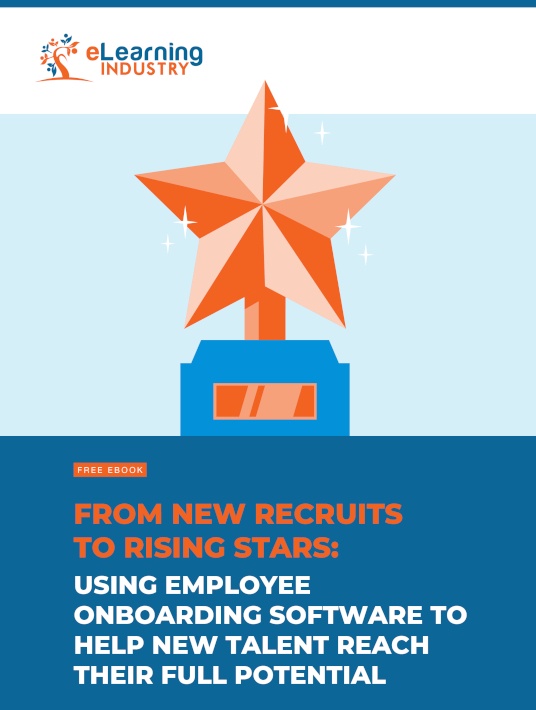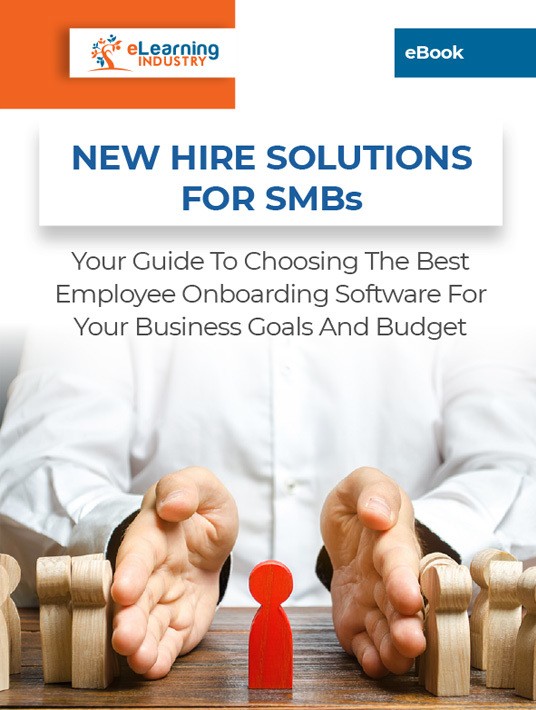Implementing New Employee Onboarding Software
In school, many of us hated certain subjects because of the teacher. We got a bad introduction and the content was marred forever. You don’t want the same thing happening with your new hires. If they get a bad start, it can influence their perception, not just of the course, but of the entire organization. You don’t want their first week of training to be the thing that makes them quit. But how can you position your new hire training to ensure that doesn’t happen? Here are some best practices of using your new employee onboarding software to help you improve ROI and nurture your new talent.

6 Employee Best Onboarding Practices To Consider
1. Start Early
One of the most awkward things about starting a new job is that disoriented feeling. You’re not quite sure what you should be doing. Yet you don’t want to just be sitting around doing nothing. You could set up your team before they ever get into the office. That way, their first day doesn’t feel as uncomfortable. Employee onboarding best practices propose that as soon as you’ve secured your employee and confirmed their contract, get them on board. Give them limited access to your employee onboarding software. The reason for the limitation is for legal purposes. Once they’re physically in the office, you can give them full access. But a week or so before they begin, let them get their toes wet.
2. Personalize Their Onboarding Experience
Offering a customized welcome is really easy to do. All it takes is a few seconds of coding or enabling a pre-set feature. When your new hires log on, they should be greeted by name. Personalization, as one of the suggested employee onboarding best practices, can go a step further, recommending units that are relevant to their job description. Invite your new hires to take pop quizzes or participate in online simulations that highlight areas for improvement. These pre-assessments help you determine skill gaps that may hold them back, as well as improve resource allocation by discovering hidden talents. Keep in mind that onboarding doesn’t have to be done chronologically. Use internal linking to cue topics related to what they’re currently studying. These content connections can serve as a memory tool. It helps them match ideas in their heads, forming a working schema.
3. Tell Them What To Expect
This goes beyond course outlines and course synopses, though these are important. It’s more crucial to set an online training timeline. Online training courses should be flexible, but you can—land should—give them a rough estimate. Leave a week’s worth of wiggle room though, so they don’t feel constrained. Still, as new employees, they do at least need guidance. Let them know how long onboarding should take on the outside. And check in with them on a week-by-week basis, prompting them if they stay off the employee onboarding software too long. Ideally, they should log in daily, even if it’s for five minutes. Send a notification if they’ve been away for three days or more. There may be a problem you don’t know about.
4. Mix Up Your Content
Some onboarding programs focus too much on culture. Others are so practical that they’re boring. If your online training course is built in-house using LMS, you have more control over the online training content. But even if you’re buying a finished product, you should take a closer look at their online training content. If possible, ask for customized content. Ideally, it should be a mix of your mission and vision plus practical tips. They should learn how to log onto the official portal, but they should also know the philosophy behind their work. Combine functional knowledge with entertainment value. Best practices for onboarding new employees suggest that if the course is fun, they’ll stick with it, and remember more of what they learn. Don’t ignore the human element. It makes all the difference.
5. Build A Resource Library
Your online training course outline shows new hires everything they need to learn. But what if they receive a task they don’t know how to do during their first week? Save them from ‘newbie’ embarrassment by creating a collection of how-tos. But make sure to prepare them for actual everyday hurdles and not rare emergencies that only incite panic. One of the best employee onboarding best practices is to catalog JIT online training resources as simply as possible so they’re easy to find and make it comprehensive as well. Basic things, like how to fill a client request form. Or complex ones, like how to avoid burnout. Offer different formats to cater to your new employees’ learning preferences. Videos, audio clips, and infographics are also good options for your onboarding support online resource catalog. You can even create the same lesson in multiple styles, so they have the choice.
6. Get Their Input
This involves everyone in your organization, not just the new hires. Ask your in-house team what they’re looking for in the new employee onboarding software. Are there certain features they require to expedite their daily work duties? As for the new employees, they need an LMS that’s user-friendly and supports interactive resources. This allows them to put their knowledge into practice and reduce work-related mistakes without having to deal with a massive LMS learning curve. Input also pertains to their personal gaps, goals, and preferences that you should consider when investing in a new platform.
Getting your new staff comfortable involves more than choosing the right software. However, their initial impressions of the platform will affect how they interact with their online training course content. Use these employee onboarding best practices to let them start training before they report to work. They can begin as soon as their contracts are finalized. Create personalized welcome screens so they feel recognized. Give them a rough guideline on your expectations, and combine practical lessons with abstract, philosophical ones. Finally, offer them a generous, easily searchable online training library of JIT resources.
5 Ways To Train Your Employees When Using New Employee Onboarding Software
New staffers are usually already insecure about their abilities. Even the brightest and most talented among them are afraid that they'll stumble on their first day. You need to prepare them for every challenge they might face and instill self-confidence. In that way, they will be ready to take on the obstacles and put their best foot forward, instead of giving your company a tarnished reputation by mishandling customer issues or misrepresenting your products. Here are 7 onboarding best practices when using employee onboarding software to train your new team members.

1. Facilitate Mistake-Driven Learning In A Safe Space
New hires are bound to make mistakes at some point. They're only human. However, new employee onboarding software gives them a risk-free space to make these errors. Thus, they're able to learn from them and avoid repeating them in the workplace. Simulations, scenarios, and real-world examples facilitate mistake-driven learning. New employees have the chance to explore the negative outcomes and prepare themselves for challenges they may encounter on the job.
2. Incorporate Certification Courses To Track Performance
Certification online courses are a great way to monitor new employee performance and progress. However, it also allows them to show off their achievements and track their own gaps. For example, customer service certification allows them to build communication skills and expand their knowledge of company policy. You can also quickly identify which new recruits are falling behind and which are rising to the top of your talent pool. If you're working with limited resources, consider repurposing your assets to create a new certification course. For instance, compile relevant webinars, podcasts, and infographics to develop a checklist they must complete to earn their certificate.
3. Let Social Learning Happen Organically
The beauty of investing in new employee onboarding software that supports social learning is tapping into peer-based support. Every member of the team gets to share their experiences, offer tips, and commiserate about negative experiences to blow off some steam. This type of organic social interactivity fosters a more positive work environment because everyone has the chance to speak up and engage with co-workers. Even if they are thousands of miles apart. Consider adding social media groups, blogs, and video-sharing platforms to your onboarding strategy to encourage collaboration.
4. Pair Them With An Experienced Co-Worker
Another way to use peer-based support to your advantage is to launch a coaching or mentoring program. Pairing new hires with a more experienced co-worker helps them feel like they're part of the community, instead of outsiders who have to struggle to blend in and become part of your organization. It also enables them to tap into the expertise of an 'insider.' For example, an employee who has been there for a decade already knows the ins and outs of company policy and how compliance issues impact their work duties. They can share this firsthand experience with their newest co-workers to reduce the learning curve.
5. Identify Negative Preconceptions
Using these employee onboarding best practices won't do much good if new hires already have a negative perception of L&D. For example, their last company didn't provide any follow-up support. Or they only hosted one training event a year, and it was solely offline. This involved traveling, taking time off work, and other inconveniences. They may even have negative preconceptions about online training performed through employee onboarding software. Such as long, boring courses that didn't really pertain to their practical job duties. You must identify these hurdles before you can develop memorable employee onboarding experiences. Conduct surveys to find out what they like/dislike about online orientation training. What would they like to see in your course? Are there any issues/gaps they're dealing with?
Conclusion
Fresh recruits are likely to leave your organization if they don't receive the personalized support they require. Following these best practices can help you implement a successful employee onboarding strategy so that you retain your new top talent. It all begins with employee onboarding software that facilitates social collaboration, mistake-driven learning, and real-world application. It should also feature built-in certification and a test engine so that you can monitor performance and identify weak points.
How can you make sure that onboarding software includes all the must-have features, needed for your in-house and remote employees? How can you use onboarding software to figure out which fresh recruits are going to advance up the corporate ladder? Get our eBook From New Recruits To Rising Stars: Using Employee Onboarding Software To Help New Talent Reach Their Full Potential to learn how employee onboarding software can help you identify in-house talent and cut L&D costs. It also highlights the perks that a new platform can bring to your organization so that you can win over those reluctant stakeholders, as well as insider tips to use your software to onboard a multicultural workforce if you plan to go global.
Also, Learn the most common onboarding errors that may cost you your top talent, and tips to avoid this. Download the eBook New Hire Solutions For SMBs: Your Guide To Choosing The Best Employee Onboarding Software For Your Business Goals And Budget to check on the onboarding best practices when using a new employee training LMS, and much more.

